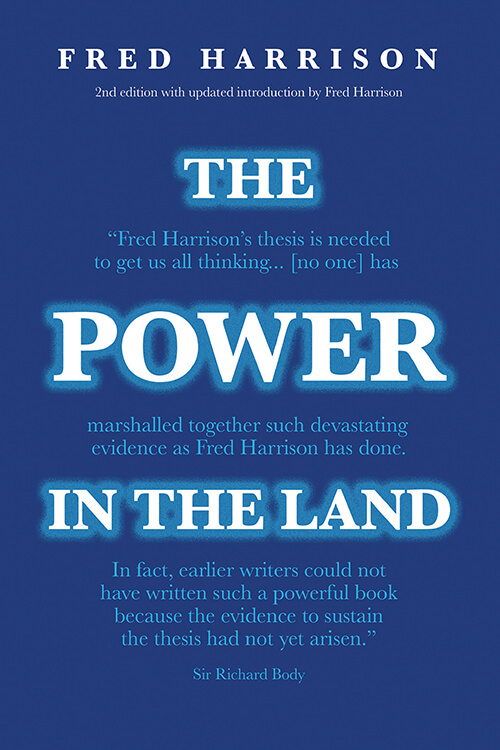This was the headline of a report in the Guardian of a conference hosted by the Treasury in London ‘in answer to critics who argue that economists failed to spot the 2008 crash because they ignored the impact of financial markets and relied on outdated theories’.
Welcome as this is, the suggestion is that it is financial markets that undermine stability, but this overlooks an underlying cause of instability in financial market. This is the property market, more precisely the market in land. This was first noted in 1983 by Fred Harrison in The Power in the Land which revealed the cyclical nature of land markets in Australia, Japan, the United Kingdom and the United States, the pattern being so similar that it suggested the timing of the next crash was predictable. Having witnessed the repetition of the boom-bust pattern in 1989-92, Harrison felt emboldened in 1997 to predict the next peak in 2007 with the crash following in 2008. This prediction was reiterated in 2005 in Boom Bust: House Prices, Banking and the Depression of 2010. While a depression may have been avoided, this was at the cost of a massive taxpayer bailout and quantitative easing.
The Financial Times also commented on the need for a new economics in an editorial on 13th November. In a subsequent letter published in the FT, Brian Hodgkinson, the author of A New Model of the Economy pointed out that the failure to recognise land as a separate factor of production is a ‘key omission from current models of the economy’. As he spells out in his book, the ‘flat earth’ models economists employ are totally unrealistic because they ignore the huge influence of spatial location, which gives rise to economic or Ricardian, rent.
In Ricardo’s Law, Fred Harrison reveals how ignorance of the law of rent creates the perverse situation where low-income taxpayers fund infrastructure improvements that enrich the affluent. Whether the overhaul of the economic curriculum will take cognizance of this or not remains to be seen.







